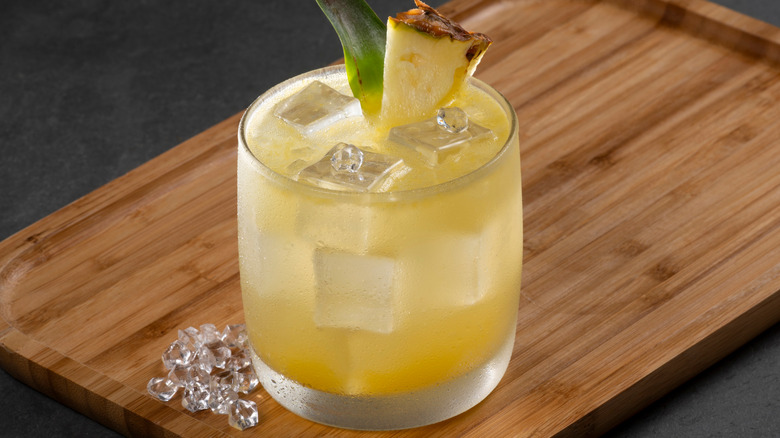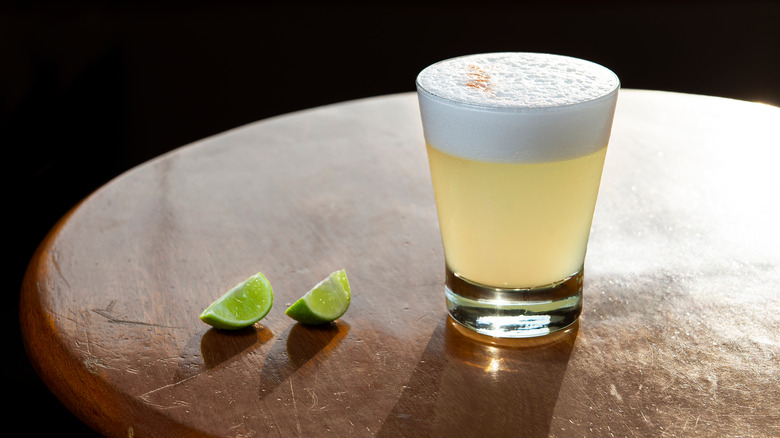Pisco Punch Was Once A San Francisco Icon
Pisco is a South American brandy — made in Chile and Peru, to be precise — and while you can absolutely enjoy it on its own, the most popular way to drink it is in a pisco sour. One of the accepted origin stories (since many cocktails have slightly muddled histories) of the pisco sour is that an American bartender moved to Lima, Peru, in the early 20th century because the country was having a mining boom. This bartender opened a saloon to cater to workers, and when he didn't have enough whiskey on hand to churn out whiskey sours, he swapped in pisco.
However, there's a lesser-known pisco cocktail predating the pisco sour that deserves some of the spotlight, and coincidentally, it was also born out of a bit of an industry boom. Pisco punch is a quintessential San Francisco drink because of its connection to the Gold Rush. Prospectors in search of gold were moving to the area in steady streams in the mid-1800s, and even as the rush faded, these prospectors settled in San Francisco where other businesses were then growing. They often looked to spend their new riches in the town's acclaimed bars. By the 1880s, one bar called the Bank Exchange and Billiard Saloon stood out as a place to imbibe and be seen, attracting names like author Rudyard Kipling. This is where the instant smash hit of pisco punch — made with already popular pisco brought up in steady streams from Peru — was born.
From its fans to its price, pisco punch was legendary
A standard recipe for pisco punch calls for pisco plus limoncello, chopped pineapple, brown sugar syrup, lime juice, orange juice, Angostura bitters, ginger beer, ice, and optionally other fruits. Bank Exchange bartender Duncan Nicol made pisco punch a local favorite. San Francisco may have other signature cocktails, like the San Francisco Fizz, but pisco punch is deeply rooted within the city's history. Legends like Mark Twain sipped Nicol's fruity concoction at the Bank Exchange's bar.
The cost of pisco punch at the time is the stuff of legends itself. An order rang in at about $25 in today's money. While there are eye-popping prices on cocktail menus around the world now, pisco punch's hefty rate proves sticker shock is nothing new in bars. When you consider the imported spirit at the center of the punch and the many ingredients that went into it — including imported pineapple, itself seen as a luxury — it's no big mystery how a pour hit patrons' wallets so hard. In fact, ordering one up came to be its own kind of status symbol.
The Bank Exchange closed with the start of the Prohibition and without Nicol serving it up, the pisco punch faded into near obscurity. A few San Francisco bars, like the Comstock Saloon, pour it for guests today, and renewed interest in historical drinks has kept the recipe circulating. If you can't get to one of those bars, it's easy enough to make pisco punch at home, especially considering how much more accessible pineapples are today.

